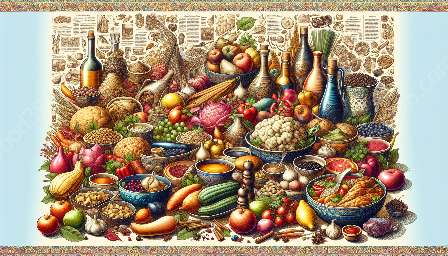Geography plays a crucial role in shaping the availability of different ingredients and spices in various regions, which in turn influences the origin and evolution of food culture. Understanding how geographical factors impact the culinary landscape provides valuable insights into the diversity and uniqueness of global cuisines.
The Connection Between Geography and Food Culture
Geography encompasses natural features such as climate, terrain, soil, and water bodies, all of which significantly affect the types of ingredients and spices that can be cultivated or sourced within a specific region. This, in turn, influences the development of local food culture and culinary traditions.
By examining the influence of geography on food culture, one can gain a deeper appreciation for the historical, economic, and social significance of different cuisines, as well as the ways in which they have evolved over time.
Availability of Ingredients and Spices
Geographical factors such as climate and soil composition dictate the types of crops that can be grown in a particular region. For example, tropical climates are conducive to the cultivation of spices like cinnamon, cloves, and cardamom, which are commonly found in the cuisines of Southeast Asia and the Indian subcontinent.
Similarly, coastal regions often have access to an abundance of seafood, leading to the integration of fish and shellfish into local cuisines. In contrast, landlocked areas may rely more heavily on livestock and grains, resulting in meat-centric dishes and hearty, grain-based staples.
Furthermore, the availability of ingredients and spices is influenced by historical trade routes and colonization, which have facilitated the exchange of culinary traditions and introduced new flavors to different regions. The impact of these historical influences can still be observed in modern-day food cultures.
Origin and Evolution of Food Culture
Understanding the geographical factors that shape the availability of ingredients and spices provides insights into the origin and evolution of food culture. The fusion of culinary traditions from various regions often reflects historical migration patterns, trade connections, and colonial legacies.
For instance, the blending of Asian and European ingredients in Peruvian cuisine can be attributed to the intermingling of indigenous, Spanish, African, and Asian culinary influences, which were shaped by Peru's diverse geography and historical interactions. This has led to the development of unique dishes like ceviche and lomo saltado that showcase a fusion of flavors and techniques.
Moreover, the evolution of food culture is also influenced by cultural exchange and globalization, which have expanded the availability of ingredients and spices beyond their regions of origin. As a result, traditional cuisines continue to evolve as they adapt to new ingredients and culinary practices, reflecting the ongoing intersection of geographical, cultural, and historical factors.
Conclusion
Geography plays a significant role in shaping the availability of different ingredients and spices in various regions, thereby influencing the development and evolution of food culture. By considering the impact of geographical factors on culinary traditions, we can gain a deeper understanding of the rich tapestry of global cuisines and the diverse flavors that have emerged from the intersection of geography, history, and culture.


